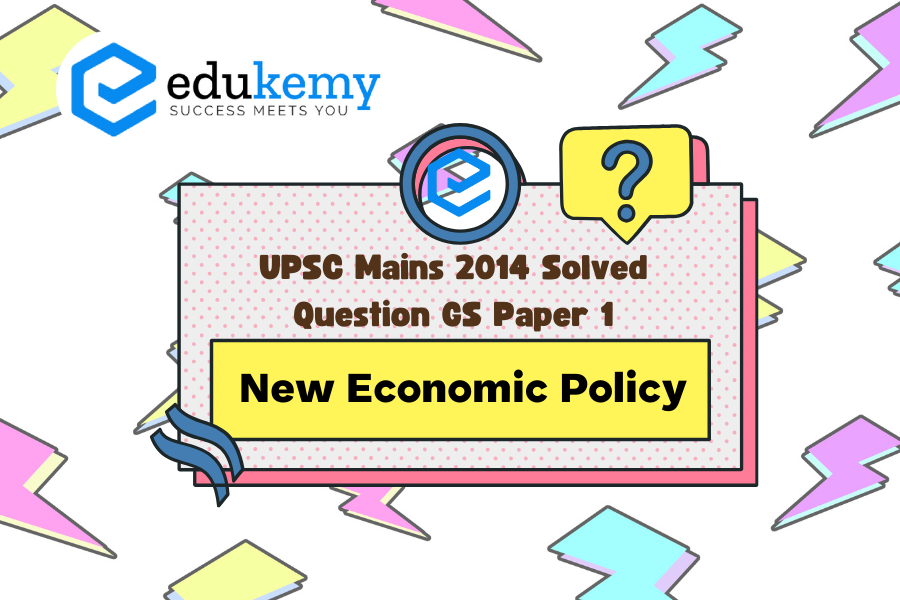The New Economic Policy (NEP) implemented by Lenin in 1921 significantly influenced India’s economic policies soon after independence. Lenin’s NEP marked a departure from strict socialism towards a mixed economy, allowing limited private enterprise and foreign investment to revive the war-torn Soviet economy. Similarly, India, facing immense challenges post-independence, adopted a mixed economy model, emphasizing state control over key sectors while permitting private participation in others. This approach aimed to stimulate economic growth while ensuring social welfare and equity. The influence of NEP on India’s economic policies is evident in initiatives like the Industrial Policy Resolution of 1956, which emphasized state ownership of key industries while encouraging private enterprise in ancillary sectors. Moreover, India’s Five-Year Plans mirrored the centralized economic planning model adopted by the Soviet Union. Despite criticisms, this hybrid model enabled India to achieve significant industrialization and economic development in the initial decades following independence.
Tag: History of the world.
Contents
Decoding the Question:
- In Introduction, briefly write about Vladimir Lenin’s NEP 1921 and how India’s economy took inspiration from that.
- In Body, substantiate how the New Economic Policy 1921 of Lenin influenced the policies adopted by India like the Mixed Economic model or the capitalist tendency in the economy.
- Here, you can conclude with the historical relation of India and Russia. Example: Russia’s influence on Indian Economy can be seen through India’s Economic model i.e., Mixed Economy.
Answer:
Historically, Russia has been a major source of ideological inspiration for Indians since centuries, starting with the Bolshevik Revolution. There are various instances of Russian events and policies having had implications or effects on India, and the New Economic Policy (NEP) of 1921 is just one of those.
In Independent India, the leaders had to decide the type of economic system most suitable for the nation, a system that would promote the welfare of all rather than a few. The political leaders believed that since planning was not possible in a market economy, they took inspiration from the Soviet economy and combined the best features of socialism for India’s Economic model. Few features of the Indian Economy were inspired by Lenin’s NEP 1921.
Lenin’s The New Economic Policy, 1921 and its Influence on India:
- The New Economic Policy, 1921 partially revoked the complete nationalization of industry which was established during the period of War Communism of 1918 to 1921.
- The New Economic Policy 1921 introduced a system of mixed economy which allowed private individuals to own small enterprises, while continuing to control banks, foreign trade, and large industries.
- In 1926, Jawaharlal Nehru, who later became India’s first Prime Minister, visited the Soviet Union and was deeply impressed by the USSR’s socio-economic pattern. Although he was skeptical of Communism’s emerging political shape, he was inspired by the Soviet economic model, and tried to take inspiration from their plan. The Industrial Policy Resolution of 1948 proposed a mixed economy which was influenced by the New Economic policy of 1921.
- The economic measures promulgated as part of the NEP brought about significant changes, in the agricultural sector, the distribution system and in the industrial sector and its organizational forms. The second five-year plan (1956-61) took the inspiration from NEP 1921 and laid the foundation for economic modernization. It was based on the Mahalanobis Model that advocated rapid industrialization with a focus on heavy industries and capital goods.
- At Indian independence, the first Prime Minister of India, Jawaharlal Nehru helped shape an economy that was substantially modeled after the Soviet template i.e., five-year plans, central planning and a dominant public sector that would assume as Nehru, borrowing Lenin’s phrase, put it the “commanding heights” of the economy.
India adopted an economic policy that combined aspects of capitalism and socialism, just like Russia’s NEP adopted a policy combining communism and capitalism. The NEP also sought to establish linkages between the rural economy and the urban economy. In India, the emphasis was on establishing linkages between the relatively developed urban areas and the painfully backward rural areas. In spirit and in certain specificities too, the reflections of the NEP can be seen in India’s post-independence economic policies.
In case you still have your doubts, contact us on 9811333901.
For UPSC Prelims Resources, Click here
For Daily Updates and Study Material:
Join our Telegram Channel – Edukemy for IAS
- 1. Learn through Videos – here
- 2. Be Exam Ready by Practicing Daily MCQs – here
- 3. Daily Newsletter – Get all your Current Affairs Covered – here
- 4. Mains Answer Writing Practice – here


